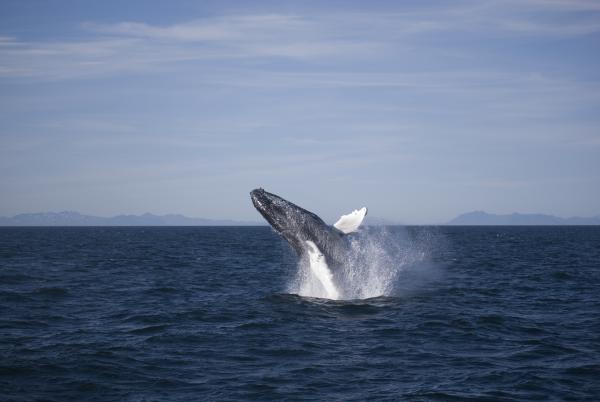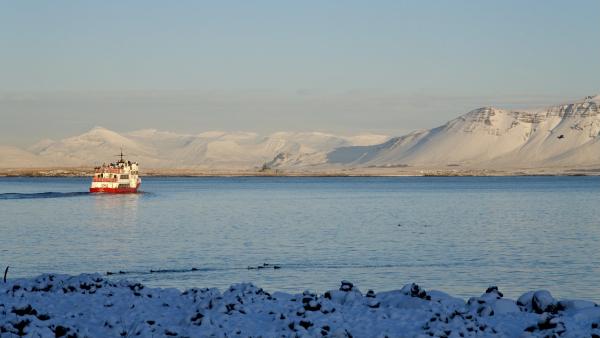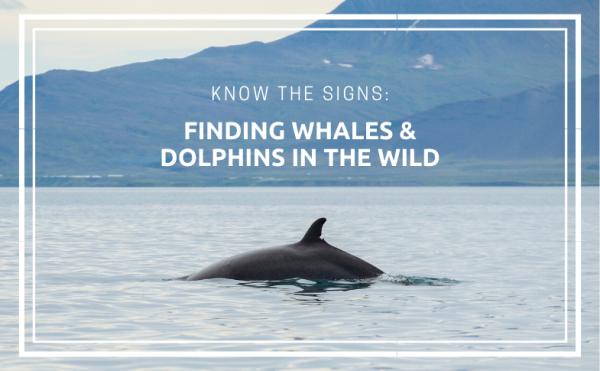Besides the fun of an Icelandic adventure out on the water, most people who come on a whale-watching tour have one obvious goal in mind: seeing a whale or a dolphin. Even our crew get excited about visiting the whales and dolphins in their natural habitat, trying to catch a glimpse of their unfamiliar world, and understanding their interactions with each other (and, if we are very lucky, even with us!) so we always hope to have special sightings. Of course, going on a wildlife tour inherently means that we have no control over what the animals do, which is how our relationship with nature should be. It also means that the animals are free to go where they want and it can therefore happen that we cannot find them no matter how hard we try. In this post we explain how likely it is to see a whale or dolphin on one of our tours and what we do to maximise our chances of finding marine wildlife.
Sighting success
The question many people want to know before coming on a whale-watching trip is how often do we actually see whales and dolphins? Every tour is different and we of course cannot guarantee a sighting of wild animals, but to give an indication of our sighting success: we saw baleen whales and/or dolphins on 91% of our tours in 2021 (see the graph below). On the 9% of tours that we didn‘t see anything (or only harbour porpoises) we offered our passengers complimentary tickets so that everyone gets another chance to see the wildlife if they want to.

Sighting success for the classic whale-watching tours per month in 2021. Dark blue indicates tours with sighting, light blue indicates that there were no sightings (note: when only harbour porpoises were encountered, the tour is regarded as “No Sightings”). Percentages above bars show the sighting success per month. *Due to the COVID-19 pandemic, many tours were cancelled and these figures therefore do not reflect the operating schedule of a typical year.
During most tours, we saw multiple individuals or multiple species, which is always exciting as it demonstrates the individual variability and species diversity of Faxaflói‘s cetaceans.

Sighting success per species per month in 2021. Grey bars show the total number of tours, while the coloured bars indicate the number of tours in which each species was sighted. Percentages above bars display sighting success, percentage in box shows total sighting success. *Due to the COVID-19 pandemic, many tours were cancelled and these figures therefore do not reflect the operating schedule of a typical year.
Although the baleen whales in Faxaflói are generally not the most social and are mostly by themselves, we encountered several pairs or trios of humpback whales and often found multiple individuals during the same tour. The minke whales were almost always solitary, but we did sometimes see a few individuals feeding in the same areas. In contrast, we almost always see the white-beaked dolphins in pods of on average 5-10, and in March 2022 we even saw superpods of over 150 individuals at once! Due to their social nature, the white-beaked dolphins were therefore the species that we saw the most individuals of. Occasionally, we are also lucky to see more uncommon species in Faxaflói, such as sei whales, fin whales, and orcas.

Number of individuals seen per month (coloured areas). The black line shows the total number of tours per month and the grey line shows the total number of tours in which a species was seen. *Due to the COVID-19 pandemic, many tours were cancelled and these figures therefore do not reflect the operating schedule of a typical year.
What do we do to maximise our sighting chances?
How do we spot the cetaceans?
First things first, we go on whale-watching tours because we love the animals and want to treat them as respectfully as possible. We therefore do not use any sonar to find them; cetaceans have incredibly sensitive hearing and a sonar would probably deter and disturb them. Instead, we use an age-old, tried-and-tested method to look for the wildlife: our natural vision, and a little bit of help from binoculars. Once we find an animal or pod, we always give them space and time to react to us before we decide to approach them or let them approach us.

What do we look out for?
There are certain signs that we look out for on the water surface that hint to us that there might be an animal in that area. Sometimes this is as subtle as a slight difference in the water movement, for example a smooth patch on the water that we call the „flukeprint“, created by the fluke of cetaceans. Other times the signs are more obvious, for example when the animals show part of their bodies. The dark contour of dolphins‘ high dorsal fins or a humpback whales‘ lifted fluke are probably the easiest way to find the whales. If we want to spot whales from far away, our best bet is to look out for the blow (the breath) of the larger whales, which can be several meters high. Alternatively, fast moving or breaching dolphins and whales can generate enormous splashes that are easily visible too.
Perhaps a bit surprisingly, we are not only scanning the water, but also inspecting the sky. The seabirds that we have in Faxaflói are not only beautiful to look at (we have a rich diversity, ranging from Atlantic puffins to glaucous gulls to northern gannets), but they are also helpful indicators of productive areas. The birds feed on some of the same fish as the cetaceans, so it is not uncommon to find bigger animals attracted to the same feeding grounds as large flocks of birds.

Finally, it‘s not just vision that we rely on: once we are close to a whale or dolphin we can start using all our senses! We always keep our ears pierced for sounds such as the powerful breath of a whale or loud splashes from jumping dolphins. Sometimes, in the case of minke whales, we can even detect the whales‘ presence by their smell because they release quite a distinctive and strong ‚fishy‘ odour.

Experienced spotters
Whale-watching is very much a team effort: it‘s not just our naturalists that are constantly scanning the water surface – our whole crew is looking out! Our captains are always looking all around, our deckhands are all trained marine biologists, and even our engineers are experienced spotters. The effort of the crew, in combination with passengers that are actively helping to spot all around the boat means that we will probably not miss an animal if it is within visual range of us.
Maximising our searching area
Of course, we never know when and where we will find which animals. In the largest bay of Iceland, looking for a whale can feel a bit like searching for a needle in a haystack. The needle in question could be larger than 10 meters, but we still have to be lucky to go to the right areas. Sometimes, the same individuals stick in the same hotspots for a few days in a row, but other times their distribution is completely random. In collaboration with other whale-watching operators, we therefore try to spread out and stay in radio communication. When another boat has found something interesting in a different part of the bay, they will let us know and vice versa so that we optimise our chances of finding wildlife.



The ocean currents in the area create excellent conditions for feeding grounds and the long period of light during the summer provides the right environment for the plankton and krill, making it a diverse and abundant bay. A successful tour is a team effort, and our crew works closely together with the passengers on spotting the wildlife, making each tour an exciting and unforgettable experience.

If you're a first time whale watcher it is perfectly normal that you don't exactly know what to look for, but you should know that whale watching with Elding is a team effort and everyone on board is encouraged to help out. There are a few tips and tricks that can help you identify signs of whales and dolphins from a distance, and a few things to keep in mind when venturing out into open seas.




